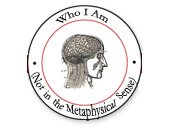
HAIRSHIRT
Helping You Get the Most Out of Your Misery

HAIRSHIRT Helping You Get the Most Out of Your Misery |

|
Thursday, January 19, 2006The Unitary Executive Theory Explained
In my reading lately, I've frequently been coming across the Unitary Executive Theory of the Presidency. As you may be aware, George W. Bush has been citing this school of thought as an influence behind his style of leadership and to specifically defend his decision to ignore FISA laws that prevent him from tapping citizens phones without permission from a special court. Before this week, I'd never heard of the theory, so I decided to do a bit of digging and find out more about it. I'm certainly glad that I did.
The theory, it turns out, dates back to an issue of Superman from 1964. Written by Edmond Hamilton, with art by Curt Swan, this issue was an "Imaginary Story"--a story that took place outside of accepted DC continuity--in which Superman was elected President. So effective was Superman in the office that Congress and the judiciary found themselves irrelevant and disbanded, leaving the Man of Steel as the sole official in the federal government. Nine years later, scholars at the Heritage Foundation who were taking a lunch break to trade comic books, eat braunschweiger and jelly sandwiches and compose songs in tribute to Richard Nixon happened upon this story and decided that, as Nixon was to their minds a kind of Superman, he should follow Kal-El's example and become a one-man government. While Nixon expressed interest in the idea during a meeting, he soon became too caught up in the unfolding Watergate scandal to fully implement the theory's suggested practices. The theory might have faded away into the annals of history after Nixon left office, were it not for the interaction between Nixon's staff and a man who had worked on Nixon's 1972 campaign, one Karl Rove. The theory's origins in a superhero magazine appealed greatly to the geek in Rove. (To be honest, the geek wasn't just in Rove, but truly all over him.) After achieving his greatest success, putting George W. Bush in office, Rove turned once again to the theory and used it to shape the Bush white house. Like Superman, Bush would eschew working with large groups of people, instead preferring to confide only in a close-knit group of advisers, or Super Friends. Just as Superman's mastery over space and time (see the ending of Superman: The Movie, in which he reverses the flow of time to get Lois Lane out from under some rocks) allowed him to shape reality, Bush would use his incredible oratory skills to make The Truth whatever he said it was. Superman had kryptonite, Bush had pretzels. And so, although the theory is only now being discussed publicly, we can see how it's been in play since Bush took office. I ask you: Would Superman pause to ask Congress before he used his x-ray vision and super-hearing to catch terrorists? Heck, no. Just think of wire-tapping as a super-power that George has. And remember, he's fighting for Truth, Justice and the American Way.
|
|
|||
| . | |||||